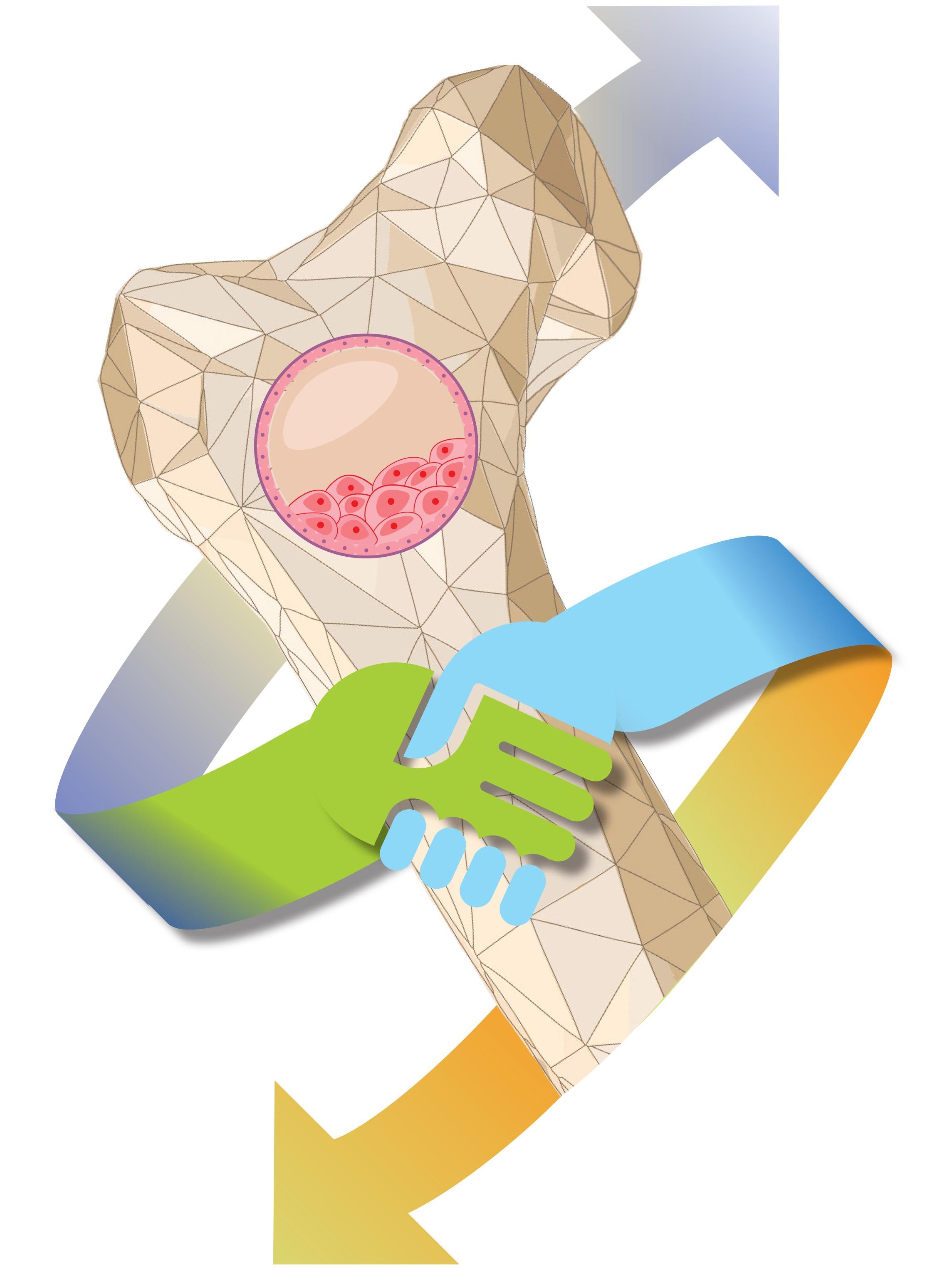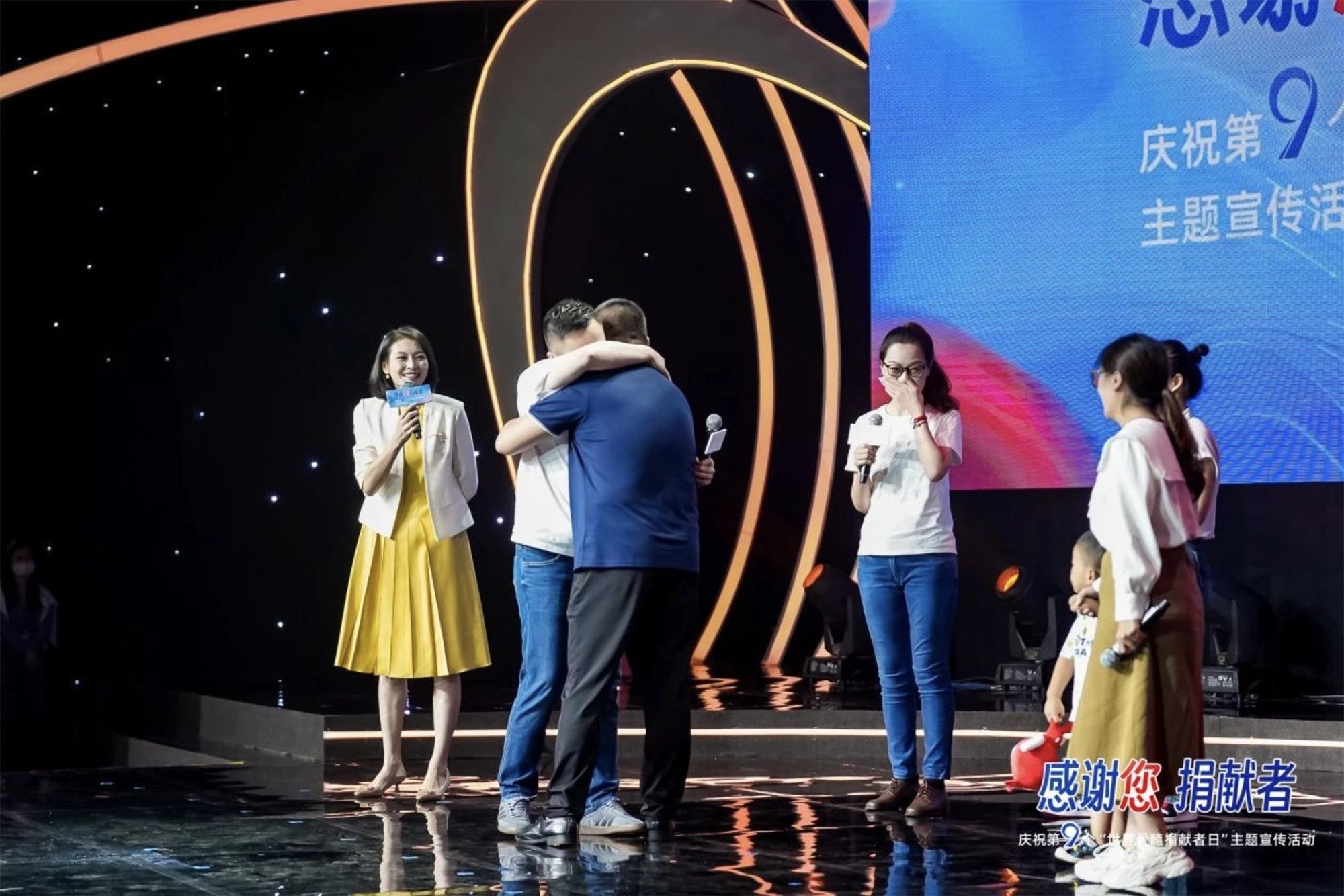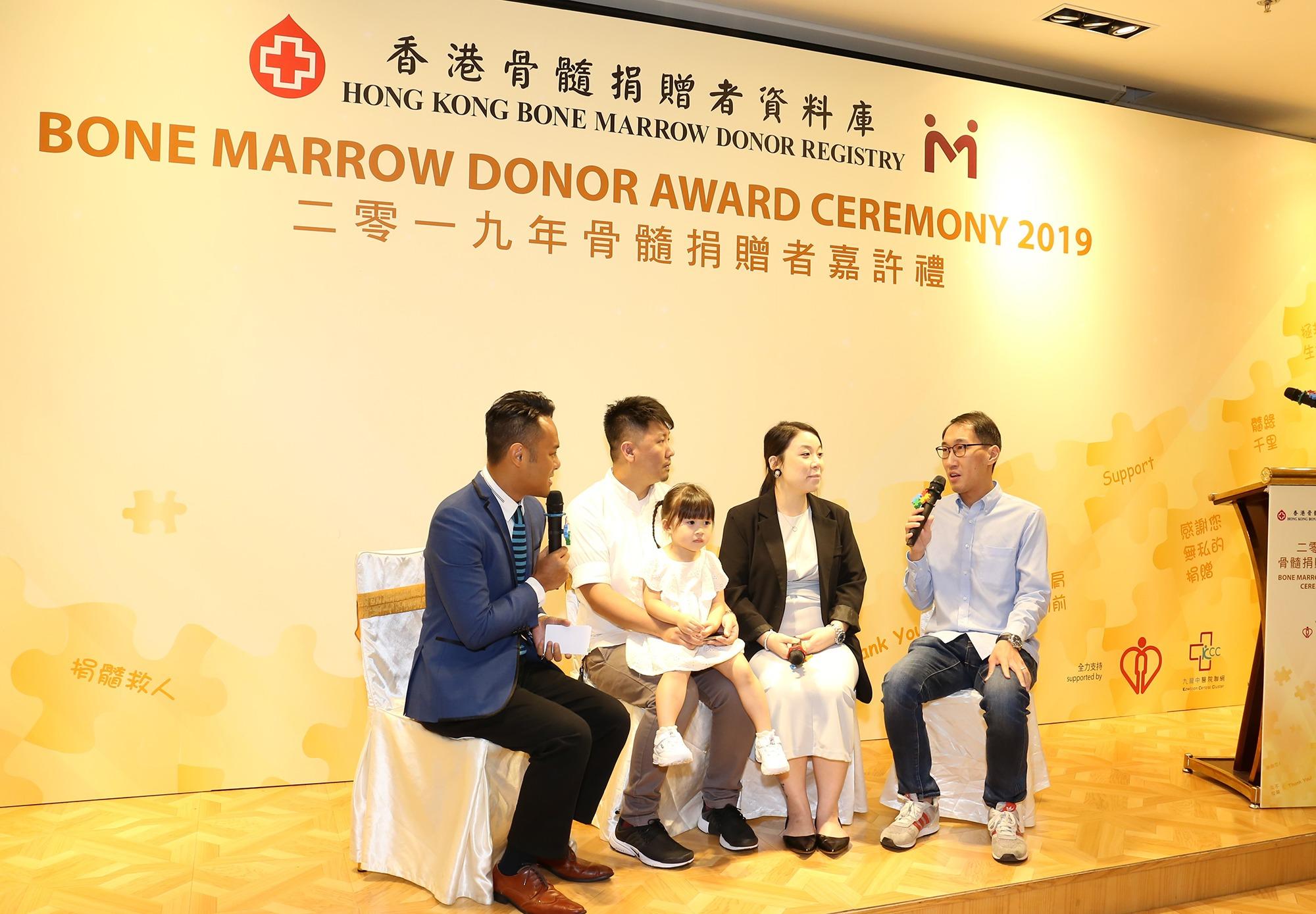Getting a matching bone marrow donor to save patients with serious blood diseases is a formidable task, aggravated by public misconceptions. To encourage potential donors to come forward to serve the community, there is still a lot to be done. Li Bingcun reports from Hong Kong.

Finding a perfect life partner isn’t easy, and seeking a suitable bone marrow donor may be even more formidable, with odds as low as one in 5,000 to 10,000 among people who are unrelated.
And, if the recipient were to have a rare bone marrow type, the possibility of getting a donor would be lower than one in 100,000.
Despite the challenging matching process, a significant majority of people are hesitant about donating bone marrow to strangers or even their own family members.
Misunderstanding and misconstrued perceptions of donating bone marrow are key factors that have daunted the general public from offering a helping hand. The lingering fear is the thought of a long, thick needle piercing into a donor’s spine to extract spinal fluid, causing pain and damage to the bones and nervous system.
In fact, the process of extracting bone marrow is akin to donating blood. It’s actually the process of removing a donor’s hematopoietic stem cells for transplantation.
 Li Peng (second from left), who recovered from severe aplastic anemia, embraces Li Zhihao, a donor of hematopoietic stem cells that saved Li Peng’s life. They met earlier this year at an awareness event in Shenzhen aimed at encouraging public participation in hematopoietic stem cell donation. (PROVIDED TO CHINA DAILY)
Li Peng (second from left), who recovered from severe aplastic anemia, embraces Li Zhihao, a donor of hematopoietic stem cells that saved Li Peng’s life. They met earlier this year at an awareness event in Shenzhen aimed at encouraging public participation in hematopoietic stem cell donation. (PROVIDED TO CHINA DAILY)
A bone marrow donor only needs to receive injections to mobilize hematopoietic stem cells from the bone marrow to become peripheral blood. Medical staff draw blood from a donor’s arm and transplant the stem cells into a patient later. A donor normally recovers within one to two days.
The treatment could help to provide a cure for more than 70 diseases, especially serious blood disorders. By rebuilding normal hematopoietic and immune functions in a bone marrow recipient with the new stem cells, a patient can expect to recover completely, without the need to take related medicines or injections for the rest of their life.
Hematopoietic stem cells from donors can also be used to save lives afar, curing patients from different regions and nations.
However, with the extremely low possibility of securing successful matching donors and recipients, the current level of donations is falling far short of what is needed.
Hematopoietic stem cell transplant is considered the most effective treatment for leukemia, as well as disorders in the functions of the hematopoietic and immune systems, such as aplastic anemia, thalassemia, lymphomas and other hematopoietic and immune system problems.
 A bone marrow transplant recipient and follicular lymphoma survivor (left) extends a thank-you note to her donor during a news conference in September 2022. The pair shared their experiences and advocated for greater public involvement in bone marrow donation. (PROVIDED TO CHINA DAILY)
A bone marrow transplant recipient and follicular lymphoma survivor (left) extends a thank-you note to her donor during a news conference in September 2022. The pair shared their experiences and advocated for greater public involvement in bone marrow donation. (PROVIDED TO CHINA DAILY)
Urgent need
There are an estimated four million leukemia patients in China, and the number is increasing by 30,000 to 40,000 annually. About a half of them are children, mostly aged two to seven. According to the China Marrow Donor Program, the number of hematopoietic stem cell transplants on the Chinese mainland ranges from a few hundred to nearly 2,000 per year. So far, the mainland has secured over 16,000 hematopoietic stem cell donations.
In the Hong Kong Special Administrative Region, more than 167,000 people have registered for voluntary bone marrow donations since the Hong Kong Bone Marrow Donor Registry was set up in 1991, with 693 of them having donated stem cells to date. More than 1,000 adults and children in Hong Kong are diagnosed with leukemia and other serious blood diseases each year.
In Shenzhen, Guangdong province, over 60,000 residents have signed up as voluntary bone marrow donors following a campaign launched in 2000. So far, Shenzhen has completed more than 600 hematopoietic stem cell donations, ranking first nationwide.
Li Peng — a 33-year-old Shenzhen resident suffering from severe aplastic anemia, a life-threatening disease in which the bone marrow fails to produce enough new blood cells for the body to function normally – had had to undergo blood transfusions every two days to sustain his life.
Three types of his blood cells — red blood cells, white blood cells and platelets — continued to diminish, causing his throat and skin to bleed and making him dizzy and weak.
The types of bone marrow in parents and children are never fully matched, as only half of their human leukocyte antigens correspond. There’s only a 25-percent probability of an exact match among siblings. Most patients are unable to find an exact match from family members and have to seek donations from people who are unrelated.
Li was in the same boat. If he had failed to find a suitable donor among strangers, his life would have been at risk, and he might need lifelong medication and blood transfusions, like a marathon with no end in sight.
Living in a rented room near a Guangzhou hospital for over a year, Li was lucky enough to find a suitable match in December 2017 under the China Marrow Donor Program, and recovered after undergoing a transplant.
Li owes an immense debt of gratitude to the donor with whom he was little acquainted until they met for the first time in Shenzhen in 2020. In a meeting arranged by the Shenzhen Blood Center, the donor traveled to Shenzhen from his hometown in Henan province to meet with Li.
The donor was a strongly built, 25-year-old man, 1.8 meters tall and weighing nearly 90 kilograms. He had been consuming celery for a month before the transplant to keep his blood pressure under check. When Li asked him why he was willing to donate, he replied that he merely wanted to perform a small act of kindness for society. Their emotional exchanges left both of them in tears.
Grateful for her husband’s swift recovery, Li’s wife registered as a voluntary hematopoietic stem cell donor and subsequently made a similar donation to a patient in Jiangxi province.
 Bone marrow donors and recipients meet during a Bone Marrow Donor Award Ceremony in 2019. The Hong Kong Bone Marrow Donor Registry, under the Hong Kong Red Cross Blood Transfusion Service, last year honored 82 individuals for their bone marrow donations in 2019-21. (PROVIDED TO CHINA DAILY)
Bone marrow donors and recipients meet during a Bone Marrow Donor Award Ceremony in 2019. The Hong Kong Bone Marrow Donor Registry, under the Hong Kong Red Cross Blood Transfusion Service, last year honored 82 individuals for their bone marrow donations in 2019-21. (PROVIDED TO CHINA DAILY)
Sharing acts
Currently, the mainstream method of sourcing volunteer hematopoietic stem cell donors is by mobilizing those willing to donate blood, as they may have a higher acceptance of such donations.
At the Shenzhen Blood Center, people have kept coming in to donate blood. There’s a wall of honor in recognition of regular donors of blood, as well as donors of hematopoietic stem cells. They include volunteers who’ve donated blood hundreds of times, and regular Shenzhen-based foreign residents.
Zhang Lin, a staff member at the center who’s responsible for contacting hematopoietic stem cell donors, said many are willing to donate blood or stem cells, but when they realize it would involve “marrow donations”, they could be deterred by misconceptions.
Some potential donors had registered one or two decades ago, but have been found to be unmatchable with any patient. As time passed, staff may have lost touch with them, and donors’ perceptions may have changed. Their health may have declined or their priorities may have shifted after having started their own families, leading them more inclined to listen to the views of their partners and children.
Zhang says she understands and respects potential donors’ decisions, and that if they were to withdraw at the last minute, it could have disastrous consequences.
Before stem cells are transplanted, patients need to undergo treatment in advance to destroy their original hematopoietic and immune system, and wait for the input of new stem cells to rebuild the system.
At this point, the patients’ fate rests entirely in the hands of donors they’ve never met. If a potential donor were to back out, it could mean the end of the road for a patient.
Lan Yuxiao, head of the Shenzhen Blood Center’s social affairs department, says Shenzhen’s medical services used to be weak, but the city has been vigorously encouraging voluntary blood donations and bone marrow transplants, especially among young people.
The number of hematopoietic stem cell donations in Shenzhen has more than quadrupled in the last decade. In 2022, the average age of such donors was 28, with 70 percent of them born after 1992.
Lan says although the discovery of umbilical cord blood stem cells in infants provides a new source for hematopoietic stem cell transplants, the overall amount of cord blood remains relatively small, and its preservation requires stricter conditions. Thus, the most popular way to collect hematopoietic stem cells is still through donations from adults.
She said she hopes the authorities invest greater resources for the center to encourage more voluntary hematopoietic stem cell donors to come forward. The center would also try harder to retain volunteers, ensuring they do not change their minds after having been successfully matched with suitable patients, and that they have a clearer understanding of the essence of their deeds.
Lan urged volunteers to consider the matter carefully before registering so that they remain committed to their pledge once a suitable match is found. “If you’ve any hesitation, do not register before you fully understand it as it would mean wasting the nation’s resources and jeopardizing a patient’s life.”
In Hong Kong, due to the COVID-19 pandemic, securing bone marrow donations in the past three years has become increasingly focused on local volunteer donors, instead of scouring overseas databases, says Kitty Leung Ka-yee, chairwoman of the Hong Kong Bone Marrow Transplant Patients’ Association.
With the advances in medical technologies, the SAR has adopted haploidentical transplantation, which is widely applied on the Chinese mainland, and allows half-matched donors like parents, offspring or siblings to donate their hematopoietic stem cells. This method has significantly expanded the availability of donors, but it still has a higher risk of rejection and infection than exact match donations after a transplant, says Leung.
To further motivate hematopoietic stem cell donations, she suggests that the Hong Kong authorities allow potential donors to mail their oral tissues to test their bone marrow type, instead of visiting a blood donation station to have their blood drawn. Collecting oral tissues in this way is more convenient and its accuracy is similar to that of a blood test, says Leung, adding that the test kits can be distributed at metro stations, clinics and other high-traffic areas.
Leung, herself a bone marrow recipient, says this is the “ultimate treatment” for patients. “With all the blood cells being killed by chemotherapy, we were pushed to the brink of death. With the infusion of stem cells from donors, we can grow a new set of bone marrow and get a complete rebirth.”
From previous cases, a donation can be driven by various motivations. It can be due to personal empathy after the donor has experienced similar hardships, a desire to give back to society after having received help, encouragement from others, or simply a willingness to do something small for those in need.
Whatever the reason, just being willing to take that step makes a lot of sense.
Contact the writer at bingcun@chinadailyhk.com


